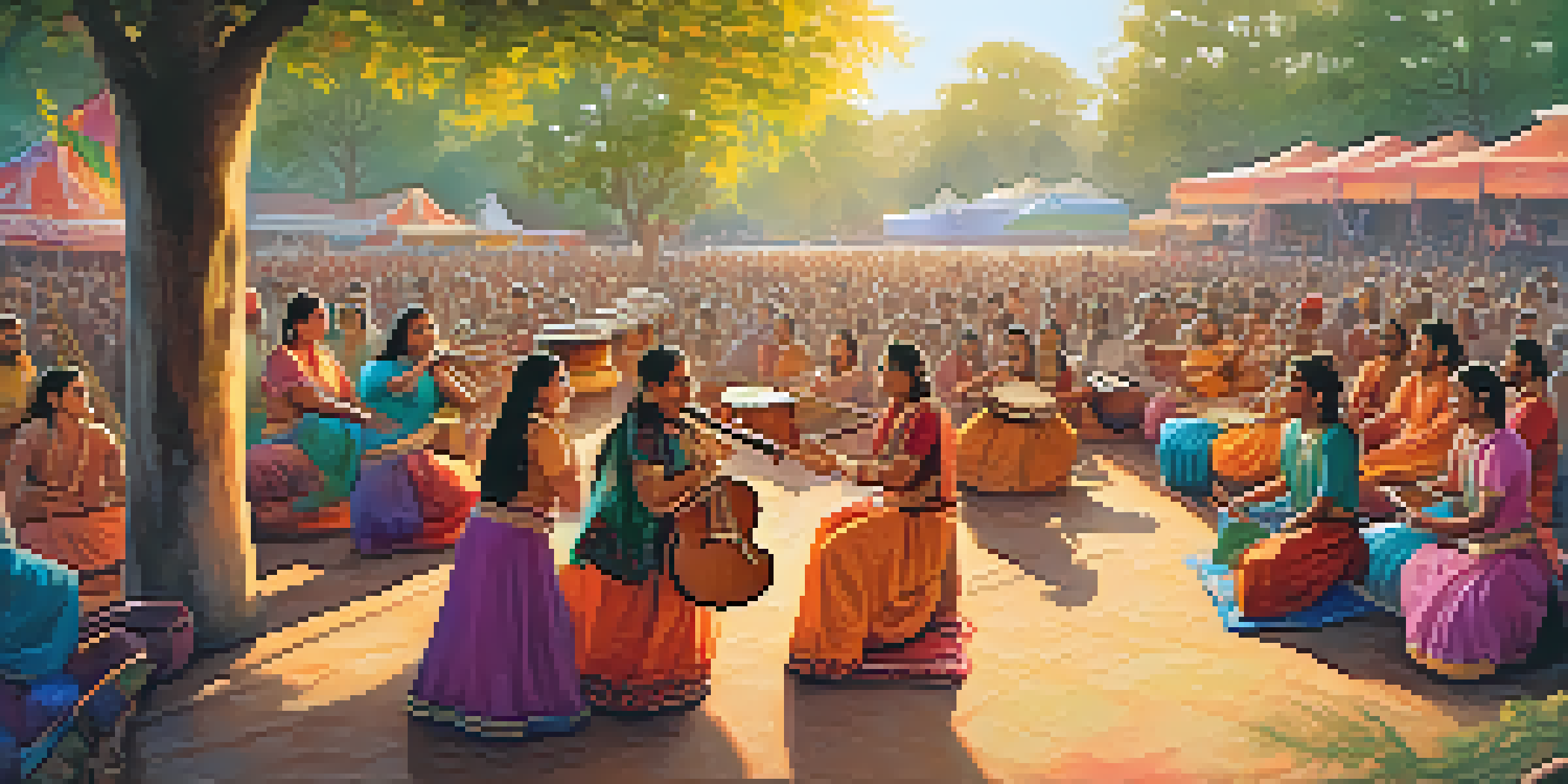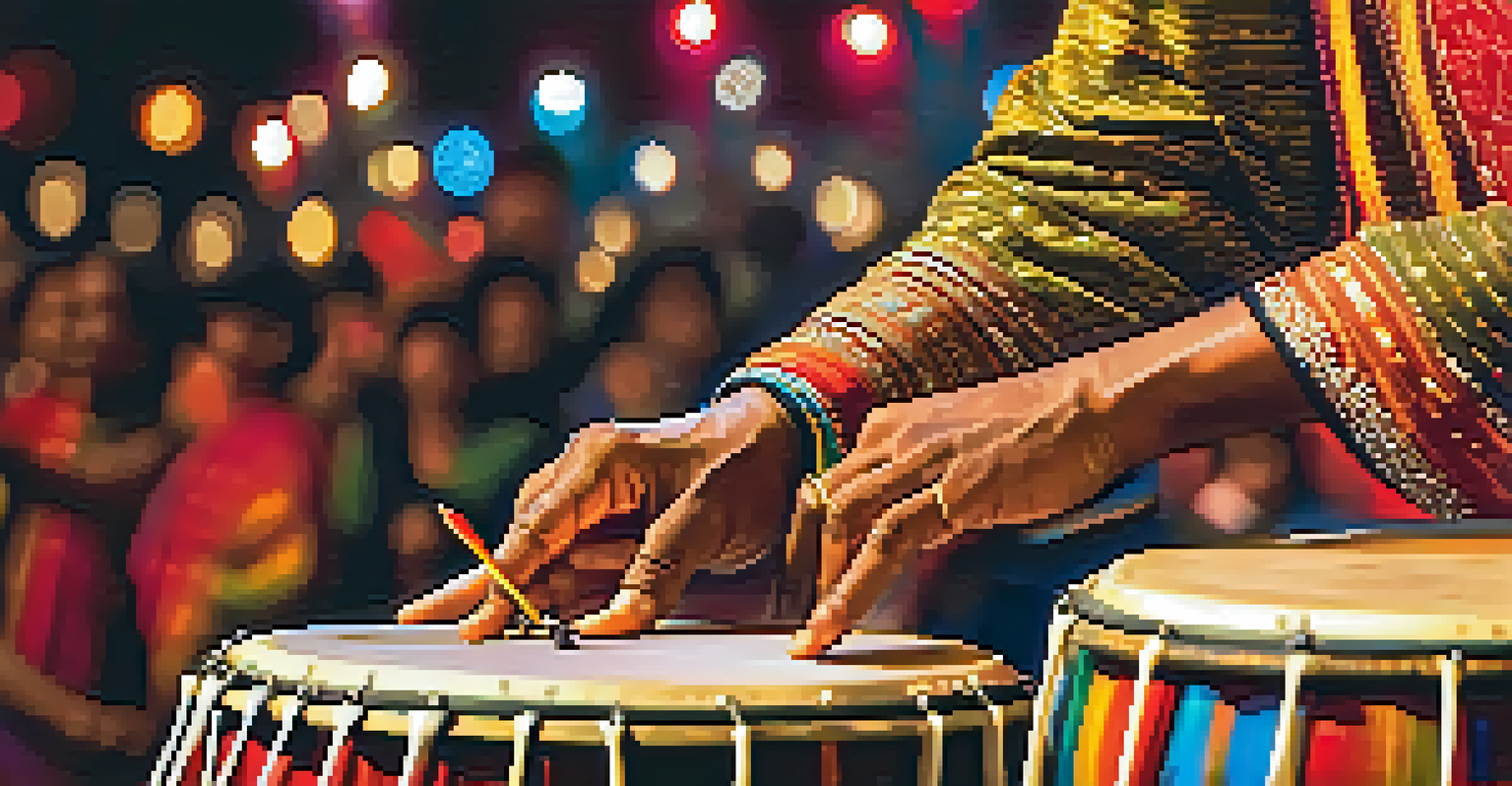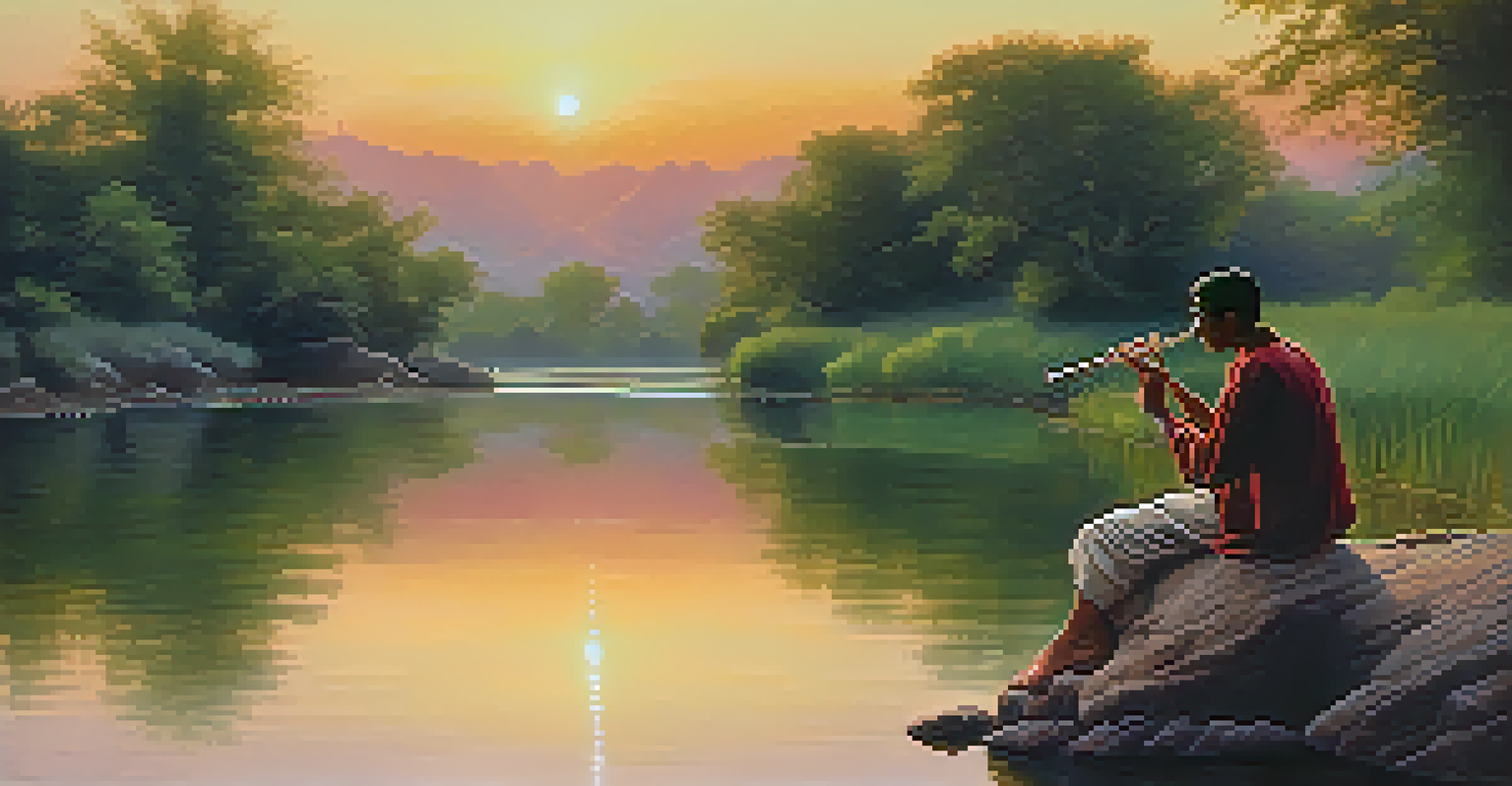Traditional Instruments at Indian Regional Music Festivals

The Heartbeat of India: Traditional Instruments Explained
India's rich cultural tapestry is woven with various traditional instruments, each telling a unique story. From the soulful melodies of the sitar to the rhythmic beats of the tabla, these instruments are integral to the country's musical heritage. They not only produce sound but also evoke emotions, connecting people to their roots and traditions.
Music can change the world because it can change people.
At regional music festivals, these instruments take center stage, showcasing the diverse musical styles of different states. Each region has its signature instruments—like the dhol in Punjab or the nadaswaram in Tamil Nadu—highlighting the cultural significance of music in daily life. This diversity makes Indian music festivals vibrant and colorful.
Understanding the role of these instruments is essential for appreciating the performances at these festivals. They are not just tools for producing music; they are part of the identity and history of the communities that play them. As you explore these festivals, you'll find that each strum and beat carries the essence of Indian culture.
A Journey Through Festivals: Where Music Comes Alive
Indian regional music festivals are a celebration of culture, art, and community, where traditional instruments play a pivotal role. Events like the Sawai Gandharva Bhimsen Festival in Pune or the Dussehra Festival in Mysore bring together artists and audiences, creating an immersive experience. These festivals are not just about listening; they are about feeling the music.

The atmosphere at these festivals is electric, filled with the sounds of traditional instruments resonating through the air. Whether it's the enchanting sound of the flute or the powerful beats of the dhol, each performance captivates listeners. The communal vibe fosters a sense of belonging, making everyone part of the musical journey.
Traditional Instruments Unite Cultures
Traditional Indian instruments are vital to music festivals, reflecting the rich cultural diversity and community identity across regions.
Attending these festivals offers a unique opportunity to see how traditional instruments are played in their cultural context. It's a chance to witness firsthand the skill and artistry of musicians who have honed their craft over generations. This connection to heritage is what makes these festivals truly special.
Instruments of Heritage: A Closer Look at Their Significance
Traditional instruments are more than just musical tools; they are symbols of cultural identity. For instance, the sitar is deeply associated with classical music and spirituality, often played in temples and during religious ceremonies. Understanding the significance of these instruments adds depth to our appreciation of the performances at music festivals.
Where words fail, music speaks.
Many instruments are tied to specific rituals or festivals, showcasing the relationship between music and culture. The ghatam, for example, is frequently used in Carnatic music and symbolizes community gatherings. Each strum or beat not only entertains but also tells stories passed down through generations.
As musicians perform at regional festivals, they often share the history and meaning behind their instruments, enriching the audience's experience. This storytelling aspect connects listeners to the cultural roots of the music, transforming a simple performance into a profound journey through time.
Spotlight on Popular Instruments: The Stars of the Stage
Certain traditional instruments have gained iconic status in Indian music festivals, often stealing the spotlight. The tabla, with its intricate rhythms, is a staple in many performances, captivating audiences with its complexity. Another crowd favorite, the sarangi, is loved for its ability to evoke deep emotions, making it a powerful addition to any ensemble.
The flute, or bansuri, offers a melodic sweetness that complements a variety of musical styles, from classical to folk. Its soothing sound can transport listeners to serene landscapes, enhancing the festival experience. Similarly, the harmonium provides a rich harmonic foundation, often accompanying vocal performances in folk traditions.
Festivals: A Celebration of Heritage
Regional music festivals serve as vibrant platforms where audiences can experience the artistry and historical significance of traditional instruments.
These instruments not only perform but also create a dialogue with the audience, inviting them to participate in the experience. As musicians take the stage, the interplay between different instruments creates a mesmerizing tapestry of sound, showcasing the beauty of traditional Indian music.
Regional Variations: The Diversity of Indian Instruments
India's vast geographical landscape gives rise to a stunning diversity of traditional instruments. Each region boasts its unique musical styles and instruments, reflecting local culture and history. For example, the pungi, or been, is a traditional instrument from Rajasthan, often associated with snake charmers, while the morchang is a jaw harp from the same region, adding a distinct sound to folk music.
In contrast, the shehnai, a wind instrument, is celebrated in the northern regions, often played at weddings and auspicious events. Its soulful sound resonates deeply with listeners, marking important life milestones. This regional diversity not only enriches the music but also allows festivals to showcase a variety of cultural expressions.
Exploring these regional variations during music festivals is like embarking on a musical road trip across India. Each performance becomes a window into a different culture, offering insights into the lives and traditions of people from various states. This journey through sound is what makes Indian music festivals so captivating.
The Role of Modernization: Traditional Meets Contemporary
As Indian music evolves, traditional instruments are finding new expressions in contemporary settings. Modern musicians are experimenting with these instruments, blending them with genres like fusion, pop, and electronic music. This innovative approach breathes new life into traditional sounds, making them relevant for younger audiences.
Festivals are increasingly showcasing this fusion, where traditional instruments are paired with modern beats and styles. This collaboration not only attracts a diverse audience but also encourages a dialogue between generations. It’s exciting to see how musicians respect traditional roots while exploring new creative avenues.
Modern Fusion Revitalizes Traditions
The fusion of traditional instruments with contemporary music styles engages younger audiences, ensuring the ongoing evolution and relevance of Indian music.
This evolution highlights the adaptability of traditional instruments, proving their resilience in a changing musical landscape. As artists continue to push boundaries, we can expect to see even more dynamic performances at regional music festivals, where the past and present harmoniously coexist.
Preserving Tradition: The Importance of Music Education
Music education plays a crucial role in preserving the legacy of traditional instruments. Many festivals now include workshops and sessions where aspiring musicians can learn from seasoned artists. This hands-on experience not only fosters talent but also instills a sense of pride in cultural heritage.
By engaging the younger generation in learning traditional instruments, festivals help ensure that these art forms continue to thrive. Students gain valuable skills and an understanding of the cultural significance behind each instrument. This educational aspect enhances the overall festival experience, making it a learning journey.

Moreover, the rise of music schools and online resources has made traditional music more accessible than ever. As awareness grows, so does the appreciation for these instruments, paving the way for future generations to carry on the tradition and keep the spirit of Indian music alive.